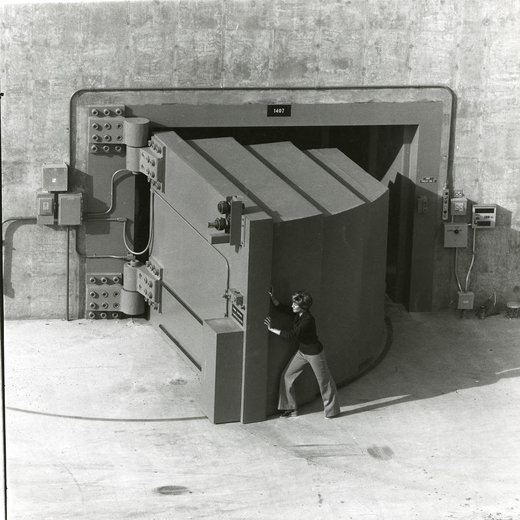
© Peter Macdiarmid/Getty ImagesWaves crash onto the beach near Brighton Pier in England, in January 2007. Gale force winds and heavy rain brought disruption to large parts of the country. Severe weather events like this one may be linked to more frequent fluctuations in the polar jet stream, according to a new study.
A new study suggests that the polar jet stream has been fluctuating more than normal as it passes over the parts of the Northern Hemisphere, and that's affecting weather in Europe and North America.
The jet stream is like a river of wind that circles the Northern Hemisphere continuously. That river meanders north and south along the way, however. When those meanders occur over the Atlantic and the Pacific Oceans, it can alter pressure systems and wind patterns at lower latitudes in Europe and North America. And that affects how warm or rainy it is on those continents.
Researchers at the University of Arizona and the Swiss Federal Research Institute studied tree rings to get a fix on how widely and how often the jet stream meanders.
Biologist
Valerie Trouet took samples from four species of trees in Europe, including
Scots pine, dating back to 1725. These revealed what kind of weather Europe had each year. And that helped them establish the normal pattern of the jet stream's fluctuations.
What surprised the scientists was that the jet stream's meandering has become more frequent. "Since 1960 we get more years when the jet is in an extreme position," Trouet says, either in its northernmost or southernmost position. She adds that this pattern of more frequent, extreme shifts north and south has never been seen before in her 290-year record.
Writing in the journal
Nature Communications, the researchers say these
more dramatic fluctuations may be responsible for some recent extreme weather events, not just in Europe, but also North America.
"Heat waves, droughts and floods affect people," says Trouet. These "happen on top of already increasing temperatures and global warming - it's a double whammy."
In the U.S., she says, extreme summer heat in the Midwest is also associated with shifts in the jet stream.
When these shifts occur as the jet passes over the Pacific Ocean, they affect warmth and dryness in California and the Southwest.
While the researchers don't attribute these more dramatic shifts to any one phenomenon, some climate scientists have suggested that oceans warmed by climate change cause changes in the behavior of the jet stream.
Comment: A couple of years ago scientists reported that
Northern Hemisphere jet streams crossed the equator and linked with others in the south.
A recent study
predicts the next solar cycle phase will bring on a 'Mini Ice Age' as early as 2020, as according to the models, there will be a
"huge reduction" in solar activity for 33 years between 2020 and 2053. This will cause global temperatures to decrease drastically.
There is a current lull in solar activity (
The sun goes blank for the second time this month in the weakest solar cycle in more than a century). Jet Stream meanderings, and much more, are explained by Pierre Lescaudron in his book
Earth Changes and the Human Cosmic Connection:
So since about 1998, when the solar activity started to drop, the Arctic jet stream has shown signs of weakness (lower speed and more southerly location). Jet stream latitudinal oscillations have been acknowledged by mainstream science for years. They are allegedly due to changes in the Arctic oscillation. [561] So far, no convincing explanation has been provided for the causes of this 'oscillation'. However, if the electric nature of our solar system is taken into account, shifts in the jet stream begin to make sense...
Therefore, if solar activity is weak, the jet stream should be observed at abnormally low latitudes. This is what has happened in recent years, particularly over Europe, with the jet stream as low as 15° north in winter (above North Africa) when it should be around 60° north (above Scotland)...
In this way, a lasting decrease in solar activity would induce an overall cooling of the 'temperate' latitudes that would be increasingly less separated from Arctic air by a more frequently and abnormally south-shifting polar jet stream. This could be an aggravating factor in the quick onset of an ice age.




Comment: A couple of years ago scientists reported that Northern Hemisphere jet streams crossed the equator and linked with others in the south.
A recent study predicts the next solar cycle phase will bring on a 'Mini Ice Age' as early as 2020, as according to the models, there will be a "huge reduction" in solar activity for 33 years between 2020 and 2053. This will cause global temperatures to decrease drastically.
There is a current lull in solar activity (The sun goes blank for the second time this month in the weakest solar cycle in more than a century). Jet Stream meanderings, and much more, are explained by Pierre Lescaudron in his book Earth Changes and the Human Cosmic Connection: